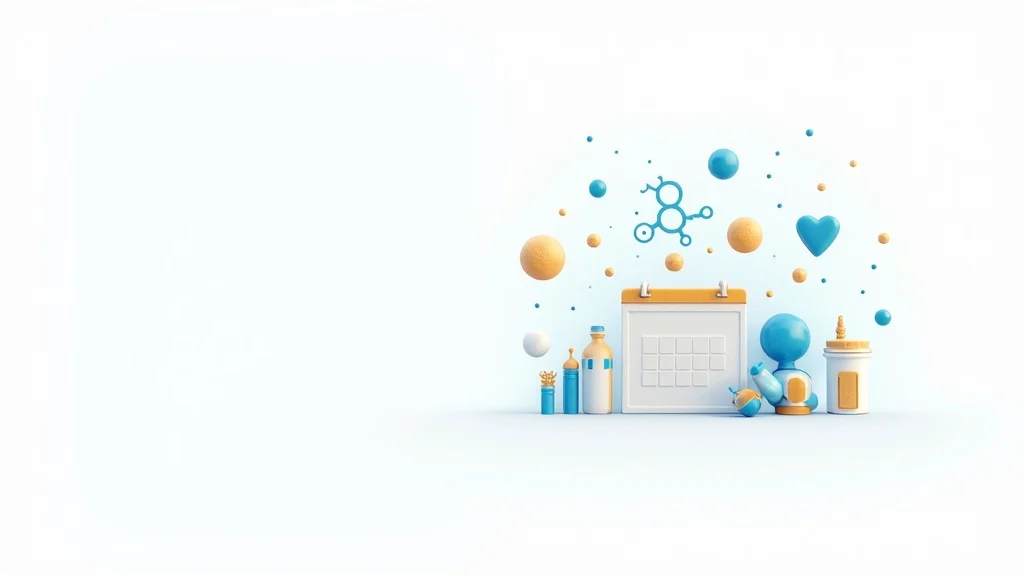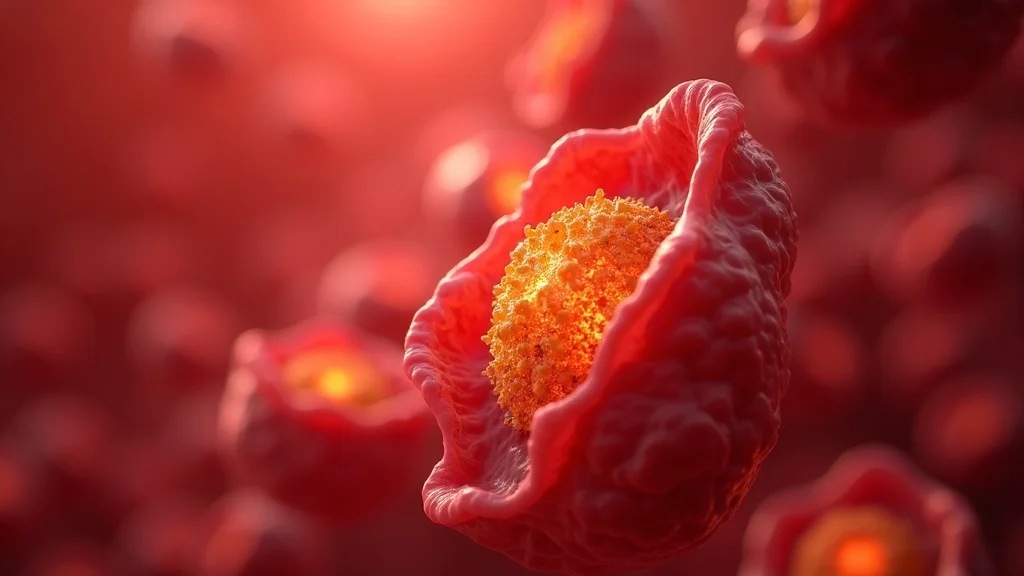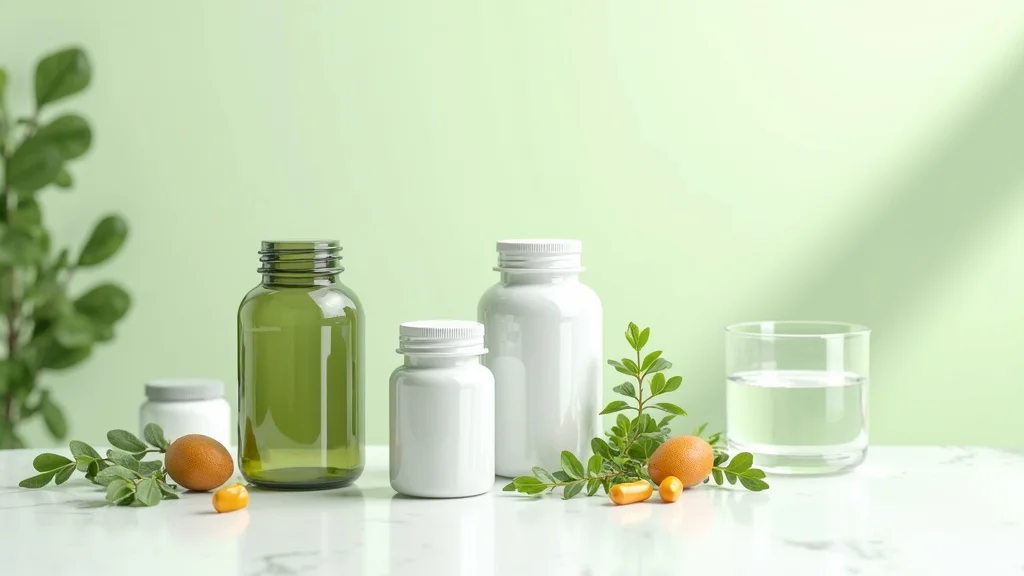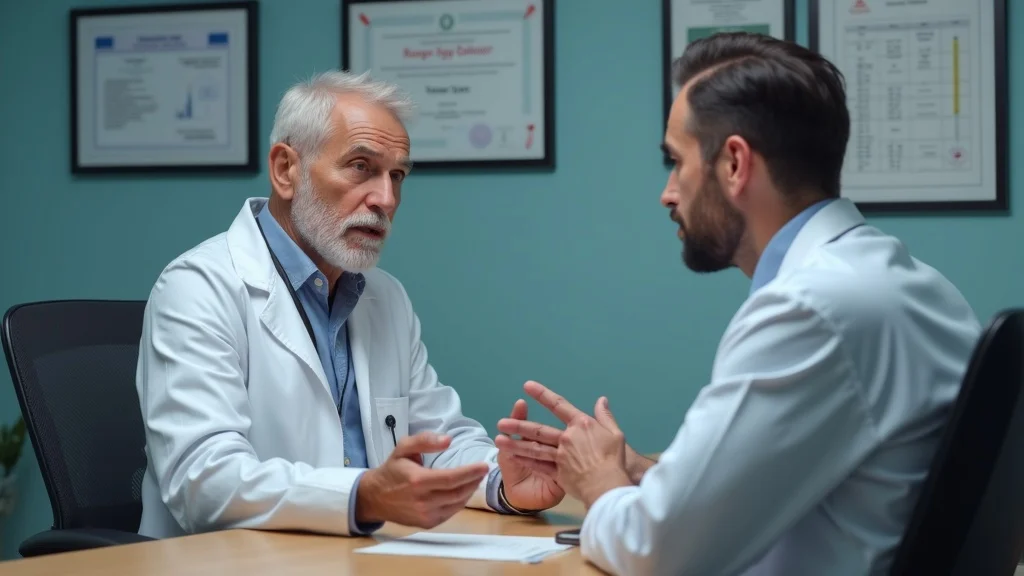Did you know? "After age 30, men experience a 1% drop in testosterone levels each year—a slow decline that can sneak up fast." For many, this slow hormonal slide begins unnoticed, only to reveal itself later as lost muscle mass, fatigue, and subtle dips in vitality. The good news? You can take action now to stop the decline, reclaim your energy, and enjoy a more vibrant life as you age.

The Startling Truth: Unconventional Facts About Testosterone and Aging
Most people assume that feeling tired, putting on extra pounds, or losing interest in the things they love is just a normal part of getting older. However, these shifts are often tightly linked to a drop in testosterone levels, especially in men after 30. Research has revealed surprising connections between testosterone and aging that mainstream advice often overlooks. Understanding these truths not only empowers older men to take proactive steps but also breaks down outdated myths around testosterone replacement and natural health.
The decline in testosterone doesn’t just affect 'older men' in their golden years—it can start as early as midlife, slowly impacting muscle mass, bone density, energy, mood, and even cognitive function. What’s unconventional is that this drop can happen without obvious symptoms at first, making it essential to recognize not just the classic signs of low testosterone but also their ripple effects on overall well-being. The truth is, managing your testosterone levels means much more than fighting visible signs of aging—it's about maintaining daily vitality and long-term health.
"After age 30, men experience a 1% drop in testosterone levels each year—a slow decline that can sneak up fast."
Why Testosterone and Aging Are Inseparable
As men age, the body's natural production of testosterone begins to wane, directly influencing everything from muscle mass and bone density to mental sharpness and sexual health. Testosterone isn’t just a sex hormone—it plays a key role across almost every tissue in the body. This hormone is intimately tied to the aging process, and its gradual decline is now recognized as a major factor in age-associated health challenges.
The link between testosterone and aging is inseparable because this hormone orchestrates much of what keeps men vibrant and active. Lower testosterone levels can hasten the aging process, amplifying fatigue, loss of muscle strength, fragile bones, and even emotional shifts. Understanding this connection is the first step to taking control—especially with safer, natural alternatives rising as preferred solutions to risky testosterone therapies.
What You'll Learn About Testosterone and Aging
- The science of testosterone and how it declines with age
- Signs and symptoms of low testosterone linked with aging
- Myths vs. facts: Testosterone replacement and natural support
- The role of testosterone in muscle mass, bone density, and daily vitality
- Natural strategies to stop testosterone decline during aging

Understanding Testosterone and Aging: How Hormones Shift Over Time
Testosterone levels naturally peak in early adulthood and begin to slowly decline as men reach their 30s and beyond. This gradual shift is orchestrated by complex interactions between the brain, pituitary gland, and the testes—especially the pivotal Leydig cells that are responsible for testosterone production. Over decades, the body's ability to keep up with optimal sex hormone output fades, paving the way for subtle, sometimes invisible, impacts on health.
It’s crucial to recognize that not all declines in testosterone are the same. Healthy aging involves a slow, regulated reduction, but stress, chronic illness, and certain lifestyle factors can accelerate this process, leaving older men more vulnerable to testosterone deficiency. Tracking hormonal changes over time gives you a proactive edge—intervening before low testosterone sets the stage for age-related challenges like declining muscle mass and brittle bones.
The Biology of Testosterone Levels and Aging
Testosterone is central to male health for a reason. Its production begins with the brain’s signal (via luteinizing hormone) to the testes, where special cells—Leydig cells—manufacture this vital hormone. As we age, these regulatory signals may weaken and Leydig cells lose efficiency, leading to a steady decline in testosterone levels. Studies have shown that by the time men reach their 50s and 60s, both total testosterone and free testosterone often fall below optimal ranges.
The importance of these hormonal shifts cannot be understated. They explain much of the muscle mass loss, reduced energy, and emotional changes tied to aging. But individual factors—like genetics, health, stress, and lifestyle—also play a big role in how quickly testosterone levels drop. Recognizing these biological roots arms you with the knowledge to seek natural, sustainable ways of keeping hormones in balance without jumping straight to testosterone therapy.
Leydig Cells: The Key Players in Testosterone Decline
Deep within the testes, Leydig cells are the microscopic factories responsible for testosterone production. As men age, these cells gradually decrease in both number and efficiency, contributing directly to the drop in testosterone concentration. Research reveals that age-related changes in Leydig cells explain not just lower hormone output, but also an increase in testosterone deficiency symptoms that impact quality of life.
The slow decline of Leydig cell function creates a ripple effect: weaker responses to hormonal signals, less robust testosterone production, and thus lower available hormone in the body. For older men, supporting healthy Leydig cell function—through nutrient-rich diets, regular exercise, and targeted supplements—may be the key to slowing or even reversing the decline in testosterone levels associated with aging.

Signs of Low Testosterone: Recognizing the Aging Process
The signs of low testosterone often mirror the typical complaints of 'getting older'—but recognizing them early is crucial. These symptoms can begin subtly, such as feeling more tired than usual or noticing it’s tougher to maintain your physique or mental focus. For some, the warning signs include diminished drive, mild depression, or a drop in sexual interest and performance. By connecting these to shifts in testosterone levels, aging men can proactively address the root cause rather than just living with the effects.
Older men facing low testosterone levels might also notice slower workout recovery, more belly fat, more frequent mood swings, or an unexplained lack of motivation. If you’re experiencing any of the following symptoms, consider them signals from your body to check your hormone health, explore natural solutions, and reclaim your vitality before these issues become lasting obstacles.
Low Testosterone Symptoms and Age-Related Changes
- Reduced muscle mass
- Lower bone density
- Fatigue and decreased energy
- Mood changes
- Sexual dysfunction

Testosterone and Aging: Myths vs. Facts
In the world of testosterone and aging, misinformation runs rampant. Contrary to popular belief, not all men are doomed to drastic hormonal drops or inevitable frailty. Some even think testosterone replacement therapy is a magic fix, while others fear any intervention could be dangerous. Understanding the real science—what actually happens as men age, and what options genuinely support healthy testosterone levels—empowers you to make smarter choices.
What’s clear is that both extremes—ignoring your hormonal health or racing to pharmaceutical solutions—carry risks. Unraveling myths and facts means looking at research, questioning hype, and focusing on evidence-based, natural approaches for long-term well-being.
Does Everyone Lose Testosterone With Age?
While it’s true that most men experience a gradual decline in testosterone, the degree and speed of loss vary widely. Genetics, overall health, lifestyle, and even environmental factors can all influence how fast testosterone levels drop. Some men maintain healthy hormone production well into older age, particularly if they preserve good nutrition, stay active, and address health conditions early. The key takeaway—aging affects everyone, but the outcome isn’t set in stone. Proactive management of diet, fitness, and stress can slow or soften the decline.
Not everyone will face testosterone deficiency to the same extent or at the same age. The best strategy is regular check-ins with your healthcare provider to monitor hormone levels, paired with holistic methods to keep your testosterone within healthy range—avoiding the extremes of neglect or overmedication.
Testosterone Replacement: Miracle or Misstep?
Testosterone replacement therapy (TRT) is often advertised as the “secret weapon” against aging, but the reality is less straightforward. While TRT may help some men with clearly diagnosed testosterone deficiency, it’s not a one-size-fits-all answer. Serious risks exist, especially for those predisposed to conditions like prostate cancer, blood clots, or heart disease. For men with low testosterone, the best approach is an individualized plan that weighs benefits against potential hazards.
"Testosterone replacement is not a silver bullet for aging—there are risks to consider, especially for men with a predisposition to prostate cancer."
In controlled trials, TRT improved certain symptoms but sometimes led to side effects or new health concerns, reinforcing why natural solutions—those that gently encourage your body’s own production—are gaining popularity among aging men looking for sustainable hormone health.
Effects of Testosterone and Aging on Muscle Mass and Bone Density
One of the most visible effects of testosterone and aging is the steady loss of muscle mass and bone density. Testosterone acts as a building block for muscle strength, helping men preserve their physique and physical performance even in later years. As levels decline, so does muscle tissue, making weight management, movement, and strength more difficult. Similarly, the hormone safeguards bones; lower levels increase the risk of osteoporosis and fractures.
Research consistently shows that older men with low testosterone levels are at greater risk for muscle weakness and bone loss, yet this decline is far from inevitable. With the right strategies—especially using natural testosterone support—men can hold onto much of their physical prowess and skeletal integrity well into advanced age.
Muscle Mass Loss: Can We Prevent It?
Muscle mass naturally drops as testosterone wanes, but targeted action can counteract this trend. Studies on men age 50 and above reveal that strength training combined with holistic lifestyle changes can significantly blunt muscle loss. Adding in natural testosterone support—via vitamins, herbs, and nutrition—may further optimize muscle maintenance without the downsides of pharmaceutical interventions.
Instead of accepting muscle loss as an unavoidable part of aging, older men now have tools to shift the curve. By preserving both testosterone levels and healthy habits, it’s possible to stay strong, active, and lean—regardless of your birth certificate.

Bone Density Decline: Testosterone’s Role in Bone Health
Testosterone plays a vital part in regulating bone density. Lower hormone levels over time are a leading risk factor for the development of osteoporosis—an often silent but dangerous condition in older men. Studies confirm that men with low testosterone experience more rapid bone loss, making fractures from minor falls a real hazard. Preventing this means supporting healthy testosterone either through natural means or, when necessary, with medical supervision.
Protecting your bones as you age isn’t just about calcium or vitamin D—keeping testosterone at healthy levels maintains the bone-building process and reduces fracture risks long-term. Men over 50 especially benefit from a proactive approach, blending sensible exercise, smart nutrition, and natural hormone support.
How Testosterone and Aging Impact Men's Health
| Aging Impact | Testosterone Effect |
|---|---|
| Gradual decline reduces muscle strength | Muscle mass maintenance |
| Higher risk of osteoporosis | Bone density support |
| Lower libido and performance | Sexual function |
| Potential for brain fog and low mood | Mental clarity |
Natural Solutions: Why Use Supplements for Testosterone and Aging
Many men are understandably wary of testosterone replacement therapy because of its potential side effects, legal restrictions, and the need for ongoing medical supervision. In contrast, natural testosterone supplements are designed to support the body’s physiological processes—not override them—making them a preferred option for older men looking to optimize hormone health and slow the aging process safely.
These supplements often contain plant extracts (like fenugreek, ashwagandha), essential vitamins (e.g., vitamin D, zinc), and minerals scientifically shown to support testosterone production naturally. Unlike synthetic therapy, which can disrupt the body’s balance and create dependency, natural supplements are gentler and more sustainable, helping maintain steady hormone levels into later life.
"Natural testosterone supplements support the body’s own hormone production without the harsh side effects of pharmaceutical therapy."
- Fewer side effects than testosterone therapy
- Potential for longer-term hormone balance
- No prescription required

How to Boost Testosterone and Slow Aging Naturally
The most effective approach to managing testosterone and aging blends natural supplementation, targeted nutrition, strength-building fitness, and restorative sleep. This holistic model not only supports optimal hormone production but also fights off the classic 'aging' symptoms—like lost muscle mass, lower energy, and brain fog—for years to come.
By addressing lifestyle factors and using gentle, evidence-based interventions, men can keep their testosterone levels within a healthy range, delaying many of the downsides traditionally associated with getting older.
Diet and Nutrition for Testosterone and Aging
- Eat foods rich in zinc and vitamin D
- Avoid processed sugars and excess alcohol
- Include healthy fats for hormone production

Exercise and Lifestyle Strategies
- Lift weights regularly to maintain muscle mass
- Incorporate HIIT for testosterone spikes
- Prioritize sleep for hormone recovery

The Risks: Testosterone Therapy Versus Natural Testosterone Supplements in Aging
Testosterone therapy can seem like a quick fix, but the side effects—including increased risk for blood clots, sleep apnea, and potentially even prostate cancer—make many medical professionals cautious about long-term use, especially for older men. On the other hand, natural testosterone supplements offer a gentler route that supports the body’s innate hormone regulation, with fewer risks and virtually no medical oversight necessary.
Weighing the benefits and downsides of each approach means looking beyond the marketing hype: natural solutions are more sustainable, safer in the long run, and help the body maintain balance organically—exactly what healthy aging should be about.
Testosterone Therapy: Benefits and Side Effects
Benefits: Testosterone therapy may rapidly improve symptoms like low libido, reduced muscle strength, and mood swings in men with clinically confirmed low testosterone levels. Some controlled trial data suggest boosts to energy, well-being, and sexual function. However, results can be inconsistent and often revert if therapy is discontinued.
Side Effects: Not all effects are positive. Testosterone therapy has been linked to increased risks of prostate cancer, cardiovascular events, blood clots, and worsened sleep apnea. Long-term safety remains under study, and owing to these risks, medical supervision is always needed. Regular blood tests and close monitoring are mandatory for men choosing this path.
Prostate Cancer: What Men Over 40 Must Know
Prostate cancer risk is always a concern with any hormone-related treatment. While evidence remains mixed, some studies indicate that artificially increasing your testosterone levels (especially in men with a history or predisposition to cancer) may increase the risk of tumor development. For men over 40—with or without a personal or family history—it's vital to discuss all hormone therapy decisions with a healthcare professional.

Safer Alternatives: Choosing Natural Solutions
Natural testosterone supplements bypass many concerns tied to synthetic therapies. Rather than forcing external hormones on the body, these products nudge your natural production upward, supporting functional Leydig cells and enhancing whole-body health. The result? Fewer side effects, less medical oversight, and a path to healthy aging rooted in the body’s own wisdom.
For most aging men, these alternatives deliver a more balanced approach—protecting against muscle and bone loss, improving vitality, and safeguarding long-term wellness.
Personal Perspective: My Journey With Testosterone and Aging
Like many men, I began noticing the telltale signs of declining testosterone levels—slower recovery, lower motivation, and an unfamiliar sense of fatigue—by my late thirties. Rather than jump to medication or ignore the symptoms, I sought out natural solutions, from targeted supplements to smarter eating and more mindful exercise. To my surprise, these holistic changes not only helped reverse my symptoms but also boosted my day-to-day energy and confidence.
"Switching to natural testosterone supplements helped me feel energized without the risks of prescription drugs."
My experience mirrors that of thousands of men: natural testosterone support offers both peace of mind and measurable results—sustaining muscle mass, sharpness, and zest for life, all without the baggage of synthetic hormones.

Expert Insights on Testosterone and Aging
"The key to healthy aging isn’t just managing testosterone levels—it’s about a whole-body approach to vitality." – Dr. Emma Lee, Endocrinologist
Experts increasingly point to combined strategies: eating well, moving often, managing stress, sleeping deeply, and, when appropriate, choosing safe, natural supplements. This integrated path is the future of healthy aging for men everywhere.
Key Takeaways on Testosterone and Aging
- Testosterone and aging are closely linked; declines begin after age 30
- Muscle mass and bone density are strongly tied to testosterone levels
- Natural testosterone supplements provide a safer long-term option
- Lifestyle habits are crucial for maintaining healthy testosterone levels and delaying signs of aging
People Also Ask About Testosterone and Aging
Does testosterone make you age better?
Answer
Healthy testosterone levels can help you age better by supporting muscle mass, bone density, energy, and mood as you grow older. Maintaining hormonal balance through natural means—like good nutrition, exercise, and supplements—can delay many of the negative impacts of aging. However, excessive or medically-unmonitored testosterone therapy can have risks, so a holistic, natural approach is recommended.
Is testosterone linked to aging?
Answer
Yes, testosterone is closely linked to the aging process in men. Testosterone levels decline naturally with age, often starting at a rate of about 1% per year after age 30. This decline impacts physical strength, bone health, mood, cognition, and sexual function, making testosterone a central focus in the science of healthy aging.
How to boost testosterone naturally?
Answer
Boosting testosterone naturally involves a combination of lifestyle changes and safe supplementation. Eat nutrient-rich foods high in zinc and vitamin D, exercise regularly (with a focus on strength training), get enough quality sleep, manage stress, and consider a natural supplement designed to support testosterone production as you age. Avoiding excessive alcohol and keeping processed foods to a minimum also helps.
Will low testosterone make you tired?
Answer
Absolutely. One of the classic symptoms of low testosterone levels is persistent fatigue or lack of energy. Men with low testosterone often report feeling tired despite adequate rest, and may notice a decrease in motivation, endurance, and even mood. Addressing hormone health—preferably with natural interventions—can help restore energy and reduce tiredness.
FAQs: Testosterone and Aging
-
How fast do testosterone levels decline with age?
Testosterone drops about 1% per year after age 30, though the rate can vary from person to person based on health, genetics, and lifestyle. -
Can testosterone therapy reverse aging?
While testosterone therapy can improve some symptoms of aging for men with low levels, it’s not a cure-all and carries risks. Natural support is generally safer for long-term well-being. -
Are natural testosterone boosters effective and safe?
Many natural supplements offer safe, gradual support for hormone production, especially when combined with healthy habits. Always choose well-reviewed, reputable products. -
Does lifestyle impact testosterone decline?
Yes. Diet, exercise, sleep, and stress levels play major roles in how quickly testosterone declines, and how well you can counteract the effects of aging.
Summary: Reclaim Vitality and Stop Age-Related Decline
- Be proactive about your health and hormone levels
- Adopt a holistic approach to testosterone and aging
- Consider natural testosterone supplements as a safer alternative
Ready to Optimize Your Testosterone and Aging?
Try a Natural Testosterone Supplement Today
Make proactive, informed choices about your testosterone and aging—embrace natural solutions for a stronger, more energetic future!
 Add Row
Add Row  Add
Add 




Write A Comment